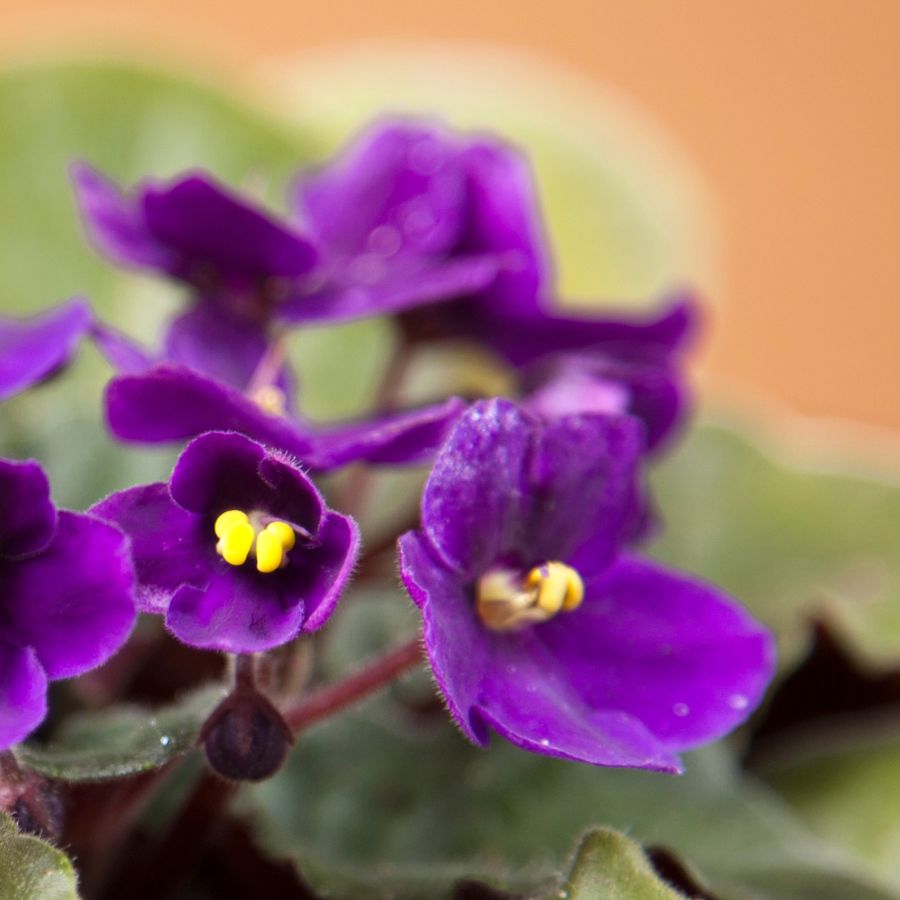African Violet
African violets are one of the world’s most popular houseplant. These compact, low-growing plants flower several times a year. African violets are distinguished by a rosette of thick, fuzzy leaves and violet-like flowers that bloom just above the evergreen foliage.
Light: African violets do well in bright indirect sunlight. If the leaves start getting light green, your plant is getting too much light, while thin and dark green leaves or a leggy plant indicate too little light.
Soil: A well-drained potting mix is essential for African violets. Poor drainage can cause root rot, in which the plant becomes waterlogged and its leaves begin to fall, so make sure to not let it sit in water.
Water: Keep soil moist with warm water and strive for high humidity. Do not allow water to contact the leaves of the plant to prevent damage. (water damage will come in the form of spots on the leaves). Water from below, or push the water spout into the soil when watering. Don’t allow the plant to sit in water.
Fertilizer: Feed with an African violet fertilizer every other week during the spring and summer.
Growth: Slow growing, but in the right conditions african violets could reach dinner plate size.
Pruning: The only pruning that should be done to African violets is to carefully remove any dead leaves and once blooms are spent, deadhead them to encourage the plant to stay healthy and bloom again.
Potting and Repotting African Violets: Repot only when necessary into a pot that is one size up (1-2 inches larger) and use an all-purpose potting soil or African violet potting mix. Only plant up to where it was originally planted and do not cover the crown of the plant.
Common signs that a plant needs to be repotted include falling leaves, and overcrowding. If roots have started to protrude from the surface of the soil, it is time to repot.
How to Get African Violets to Bloom
These plants love to show off their beautiful blooms and if cared for properly, can bloom year round. Provide it with the proper light, water, humidity, fertilizer, and soil, and you will have a happy, healthy plant. African violets like to feel cozy and tight in their pots, but not to the point of being root bound. This is when they start blooming and flowering for longer periods of time. When the flowers are spent, make sure to deadhead them as that will encourage the plant to flower more, and hopefully, you’ll see new blooms in about six weeks.
Non toxic to pets and people.


